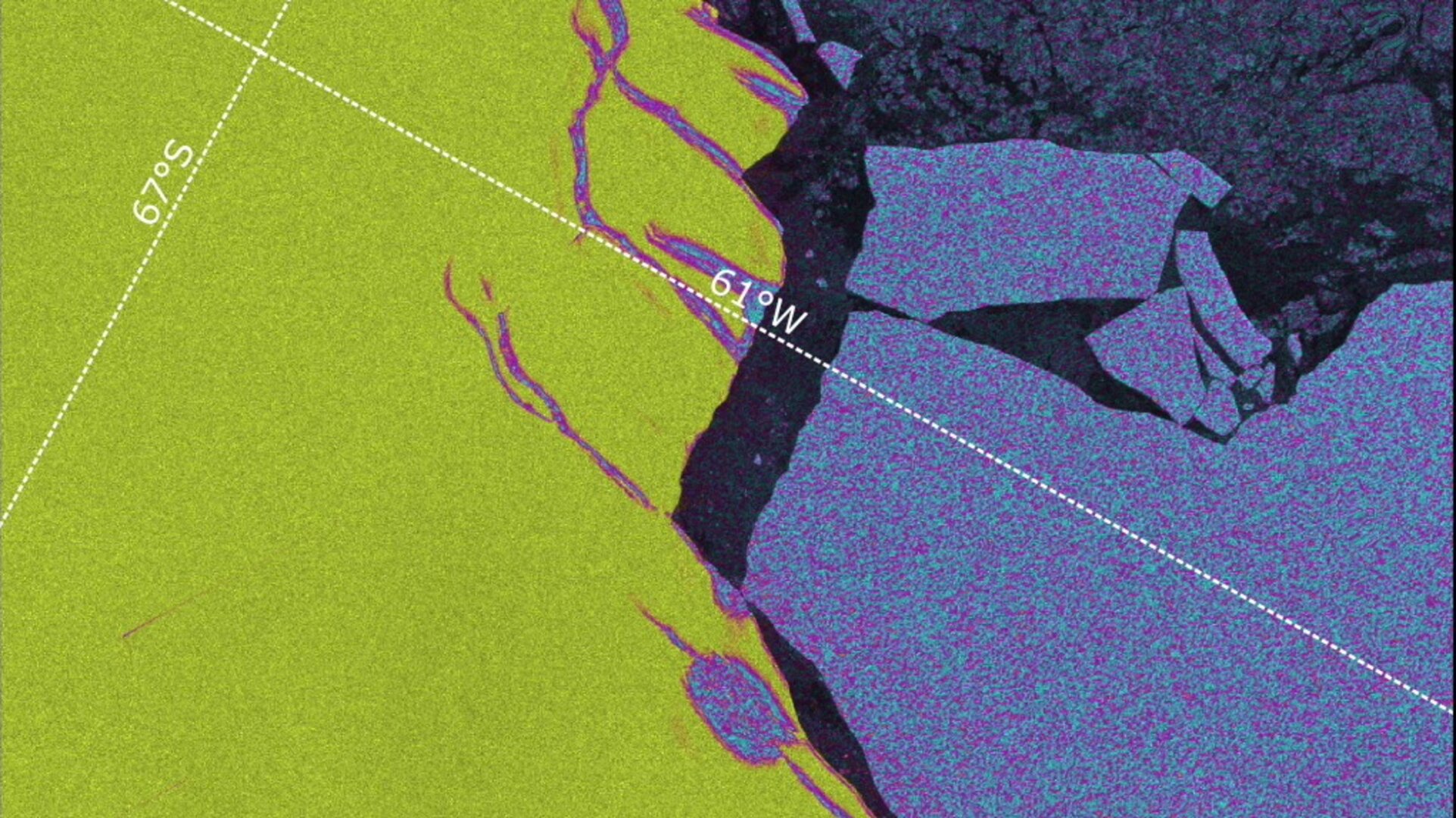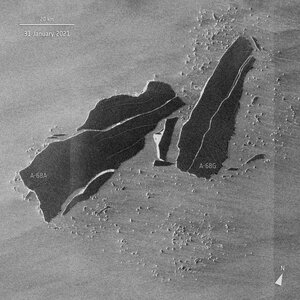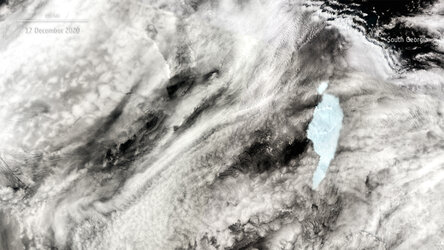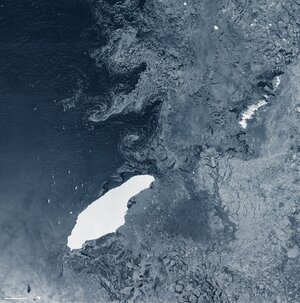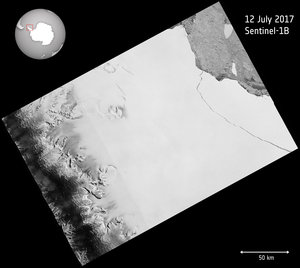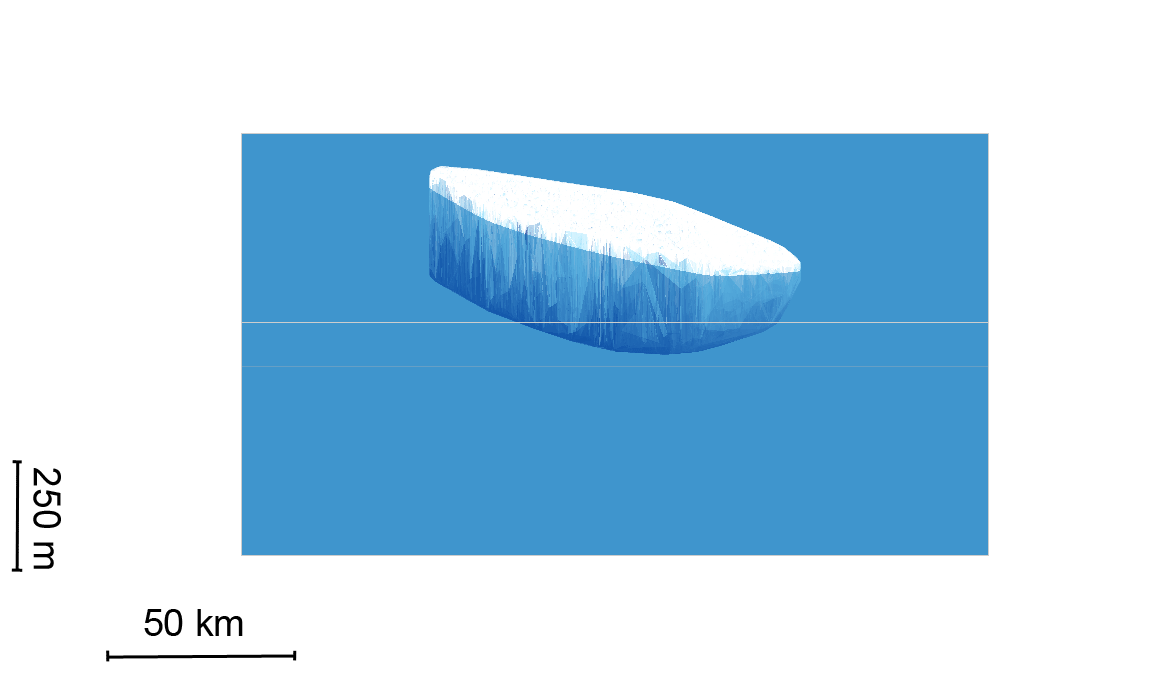The A-68 story
In July 2017, the lump of ice, more than twice the size of Luxembourg, broke off Antarctica’s Larsen C ice shelf – spawning one of the largest icebergs on record. Now, three years later, the A68A berg is being carried by currents in open waters – thousands of kilometres from its birthplace – wreaking havoc near the waters of the South Georgia Island.
Follow the latest updates on the A-68A’s journey across the Southern Ocean.
1 February 2021 New images, captured by the Copernicus Sentinel-1 mission, show the iceberg suffered further damage as a new iceberg calved from A-68A. The smaller slab, named A-68G by the US National Ice Center, measures approximately 53 km in length and around 18 km at its widest point.

30 January 2021 Satellite images reveal that the once colossal A-68A iceberg has had yet another shattering experience, breaking into multiple pieces. The collective group of icebergs appear to be drifting apart, which could indicate the end of A-68A’s environmental threat to South Georgia.

17 December 2020 A large block of ice breaks off the upper tip of the A-68A iceberg, which has now spun around in a clockwise direction.

11 December 2020 The giant A-68A iceberg could strike land this month – wreaking havoc near the waters of the South Georgia Island. If it remains on its current path, the iceberg could ground in the shallow waters offshore – threatening wildlife, including penguins and seals.


Access the video
1 December 2020 All eyes remain on the giant A-68A iceberg on its journey across the Southern Ocean. This image shows A-68A’s movements over the past 15 days using data from the Copernicus Sentinel-1 and Sentinel-3 missions.

26 November 2020 New images, captured by the Copernicus Sentinel-1 mission, show the A-68A berg is rotating and potentially drifting westwards.

5 July 2020 Copernicus Sentinel-1 captures the A-68A berg in open waters near the South Orkney Islands in the South Atlantic Ocean – about 1050 km from its birthplace.
A look back to where it all began. Click through the slider below to see images and animations captured by satellites documenting A-68A's journey over the previous three years.







